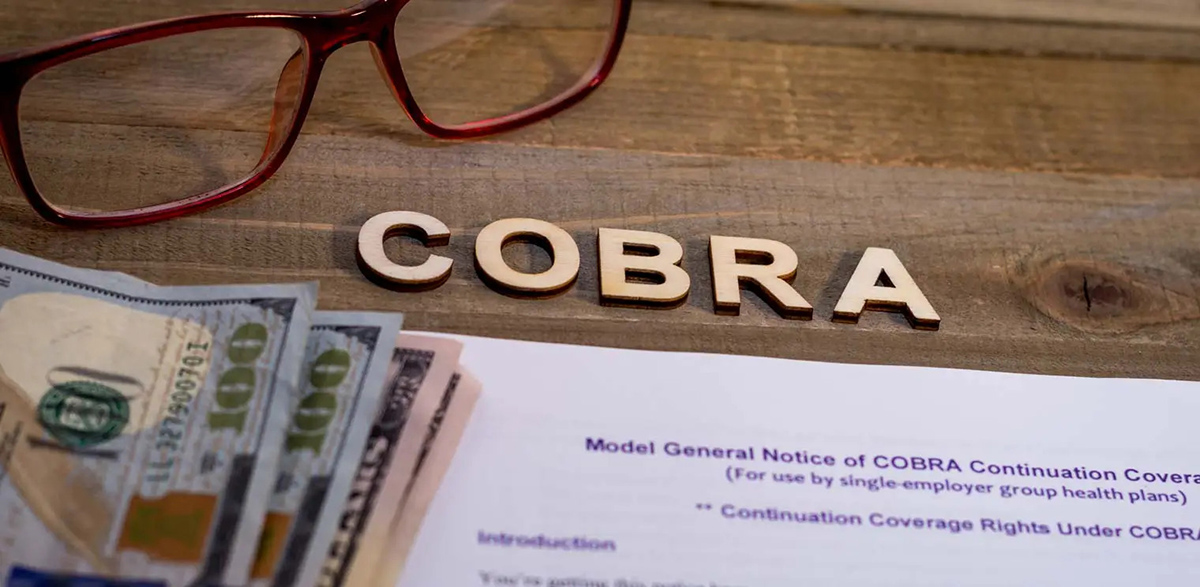Home>Finance>What Does It Mean When My Statement Balance Is Negative


Finance
What Does It Mean When My Statement Balance Is Negative
Published: March 2, 2024
Understanding the implications of a negative statement balance in finance. Learn why it happens and how to address it effectively. Gain control of your financial situation.
(Many of the links in this article redirect to a specific reviewed product. Your purchase of these products through affiliate links helps to generate commission for LiveWell, at no extra cost. Learn more)
Table of Contents
**
Introduction
**
Understanding your financial statements is crucial for managing your personal or business finances. One key component of financial statements is the statement balance, which provides a snapshot of your financial standing at a specific point in time. Most of the time, a positive statement balance indicates that your accounts are in good standing, but what does it mean when your statement balance is negative?
In this article, we will delve into the concept of statement balances, explore the potential reasons for a negative statement balance, discuss the potential consequences, and provide actionable steps for resolving this issue. By the end of this article, you will have a comprehensive understanding of negative statement balances and the necessary knowledge to address them effectively.
Understanding the intricacies of financial statements can be daunting, but it is essential for making informed financial decisions. Whether you are an individual managing personal finances or a business owner overseeing company accounts, being well-versed in financial statements empowers you to navigate the complexities of the financial world with confidence.
Now, let's embark on a journey to unravel the mysteries of negative statement balances and equip ourselves with the knowledge needed to tackle this financial challenge head-on.
Understanding Statement Balance
Before delving into the implications of a negative statement balance, it’s essential to grasp the concept of a statement balance. The statement balance, often found on bank statements, credit card statements, and other financial documents, represents the total amount owed or available in an account at a specific point in time.
For credit card statements, the statement balance reflects the outstanding balance that must be paid by the due date to avoid interest charges. On the other hand, for bank statements, the statement balance typically denotes the total funds available in the account, encompassing deposits, withdrawals, and any accrued interest or fees.
It’s important to note that the statement balance is distinct from the current balance, which reflects real-time transactions and may differ from the statement balance due to pending transactions or recent account activity.
Understanding your statement balance is crucial for maintaining financial stability and making informed decisions about spending, saving, and debt management. By regularly monitoring your statement balances, you can gain a clear understanding of your financial standing and take proactive steps to avoid potential issues, such as overdrafts or late payments.
Now that we’ve established the significance of statement balances, let’s explore the potential reasons behind a negative statement balance and its implications.
Reasons for a Negative Statement Balance
A negative statement balance can be perplexing and concerning, but understanding the underlying reasons is essential for addressing this financial anomaly. Several factors can contribute to a negative statement balance, and identifying the specific cause is instrumental in rectifying the situation.
1. Overdrafts: One common cause of a negative statement balance is overdrawing from a bank account. When withdrawals or transactions exceed the available funds, the account balance can dip into negative territory, resulting in a negative statement balance on the next statement cycle.
2. Outstanding Debt: For credit card statements, a negative balance may arise from unpaid charges or accrued interest, leading to a deficit in the statement balance. Failure to make timely payments or carrying a high balance from month to month can contribute to a negative statement balance.
3. Fees and Penalties: Accumulated bank fees, overdraft charges, or late payment penalties can diminish the available funds in an account, potentially leading to a negative statement balance if these charges are not promptly addressed.
4. Unforeseen Expenses: Unexpected financial obligations, such as emergency repairs or medical expenses, can deplete account balances, resulting in a negative statement balance if the necessary funds are not readily available.
5. Pending Transactions: In some cases, pending transactions or authorization holds may not be immediately reflected in the statement balance, potentially causing discrepancies that lead to a negative balance once these transactions are processed.
Understanding these potential reasons for a negative statement balance illuminates the multifaceted nature of financial management and highlights the importance of proactive financial planning and monitoring. In the subsequent section, we will explore the potential consequences of a negative statement balance and the implications for individuals and businesses.
Potential Consequences of a Negative Statement Balance
Encountering a negative statement balance can trigger a cascade of financial repercussions, underscoring the significance of promptly addressing this issue. Whether it pertains to personal accounts or business finances, a negative statement balance can lead to various adverse consequences that warrant careful consideration.
1. Overdraft Fees and Interest: When a bank account sustains a negative balance, financial institutions may impose overdraft fees or interest charges, compounding the financial burden on the account holder. These additional expenses can exacerbate the negative balance, making it more challenging to restore the account to positive standing.
2. Credit Score Impact: For individuals, a negative statement balance on credit card accounts can detrimentally impact credit scores. Failing to rectify the negative balance and make timely payments can result in derogatory marks on credit reports, potentially impairing creditworthiness and future borrowing capabilities.
3. Account Restrictions: Financial institutions may impose restrictions on accounts with negative balances, limiting access to certain banking services or imposing temporary holds on deposits and withdrawals until the balance is brought back to positive territory.
4. Legal Action: In extreme cases of prolonged delinquency or failure to address negative balances, creditors or financial institutions may pursue legal action to recover the outstanding debts, leading to potential legal ramifications and additional financial strain.
5. Business Implications: For businesses, negative statement balances can disrupt cash flow, impede financial planning, and erode trust with vendors and partners. Persistent negative balances can signal financial instability and undermine business relationships and creditworthiness.
By understanding the potential consequences of a negative statement balance, individuals and businesses can appreciate the urgency of resolving this issue and mitigating its impact on their financial well-being. In the subsequent section, we will explore actionable steps for addressing and resolving a negative statement balance to restore financial stability and peace of mind.
Resolving a Negative Statement Balance
Addressing a negative statement balance necessitates proactive measures to rectify the financial discrepancy and restore positive standing. Whether it pertains to personal accounts or business finances, taking decisive action is paramount in mitigating the repercussions and regaining financial stability.
1. Review Transactions: Begin by meticulously reviewing your account transactions to identify the specific cause of the negative balance. Scrutinize recent withdrawals, payments, and fees to pinpoint any discrepancies or unauthorized charges that may have contributed to the deficit.
2. Deposit Sufficient Funds: For bank accounts with negative balances, promptly depositing sufficient funds to cover the deficit is crucial. Transferring funds from another account or making a deposit to reconcile the negative balance demonstrates a proactive approach to resolving the issue.
3. Address Outstanding Debts: In the case of credit card statements or outstanding loans contributing to negative balances, prioritize addressing these debts by making timely payments. Allocating funds to settle outstanding balances and accrued interest can alleviate the negative balance and prevent further financial strain.
4. Negotiate Fees and Charges: If overdraft fees, late payment penalties, or other charges have contributed to the negative balance, consider contacting your financial institution or creditor to negotiate the reduction or waiver of these fees. Demonstrating a commitment to rectifying the situation may lead to favorable resolutions.
5. Communicate with Creditors: For businesses facing negative statement balances, maintaining open communication with creditors and suppliers is vital. Inform them of the steps being taken to address the negative balances and negotiate feasible repayment terms to mitigate potential disruptions to business operations.
6. Monitor Account Activity: After taking remedial actions, diligently monitor your account activity to ensure that the negative balance is successfully resolved and that subsequent transactions do not exacerbate the situation. Stay vigilant in managing your finances to prevent future occurrences of negative statement balances.
By conscientiously addressing and resolving negative statement balances, individuals and businesses can safeguard their financial well-being and cultivate responsible financial management practices. In the concluding section, we will recap the key insights and underscore the importance of proactive financial monitoring and planning.
Conclusion
Navigating the intricacies of financial statements, particularly the phenomenon of negative statement balances, underscores the importance of astute financial management and proactive resolution of financial discrepancies. Whether encountered in personal accounts or business finances, negative statement balances can precipitate a myriad of adverse consequences, necessitating prompt and decisive action to rectify the situation.
Understanding the underlying reasons for negative statement balances, such as overdrafts, outstanding debts, fees, and unforeseen expenses, empowers individuals and businesses to identify the root causes and implement targeted solutions. By reviewing account transactions, depositing sufficient funds, addressing outstanding debts, and fostering open communication with creditors, the path to resolving negative statement balances becomes clearer.
Moreover, comprehending the potential consequences of negative statement balances, including overdraft fees, credit score impact, account restrictions, and business implications, underscores the urgency of addressing these financial anomalies to mitigate their repercussions.
Proactive financial monitoring, responsible spending, and diligent management of account balances are essential practices for averting negative statement balances and fostering long-term financial stability. By imbuing financial decision-making with prudence and foresight, individuals and businesses can fortify their financial resilience and navigate the complexities of the financial landscape with confidence.
In conclusion, the journey to unravel the mysteries of negative statement balances equips us with the knowledge and acumen to confront these challenges head-on, fostering a culture of financial empowerment and informed decision-making. By embracing these principles, we can forge a path toward financial well-being and secure a stable foundation for future prosperity.














